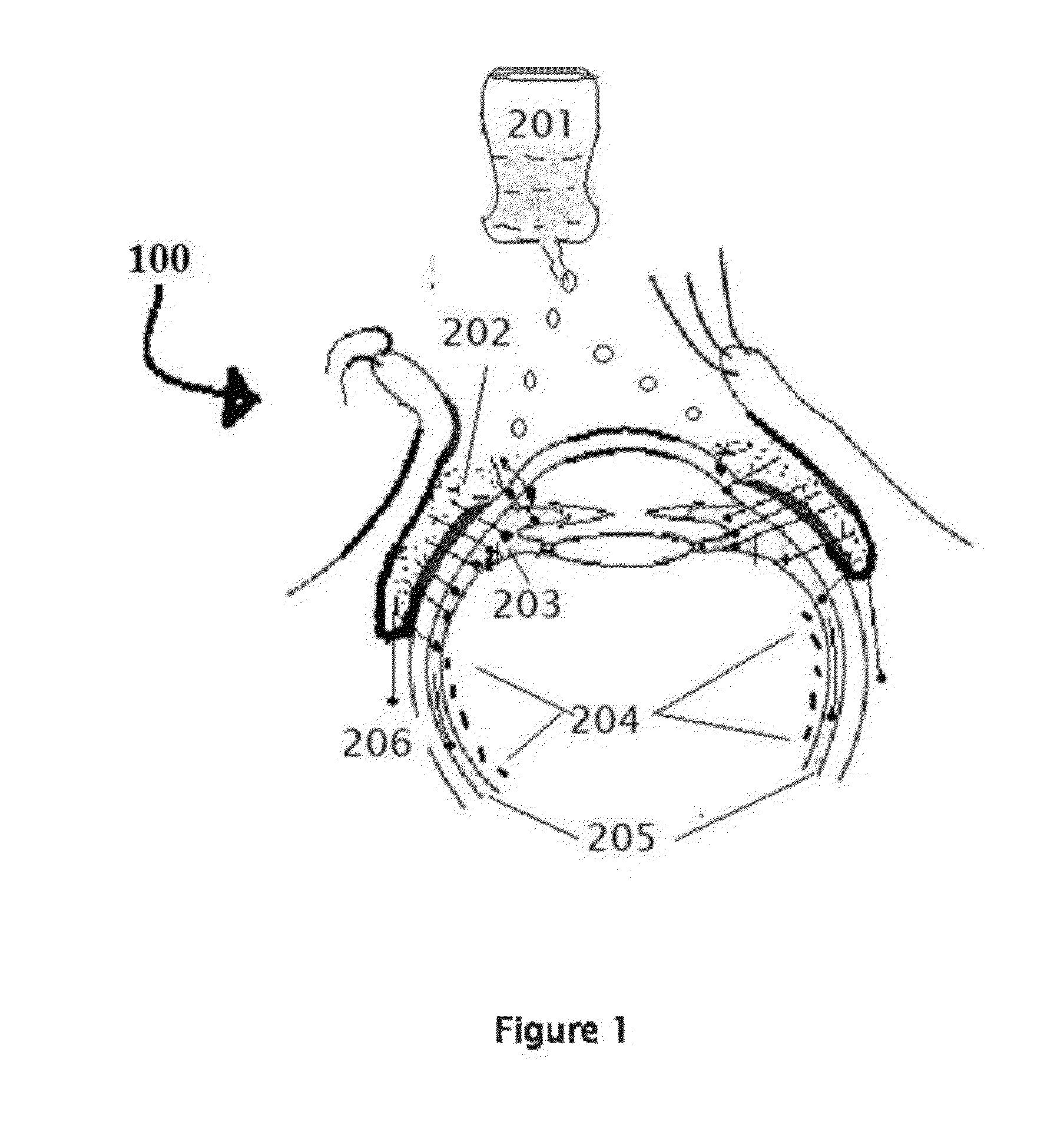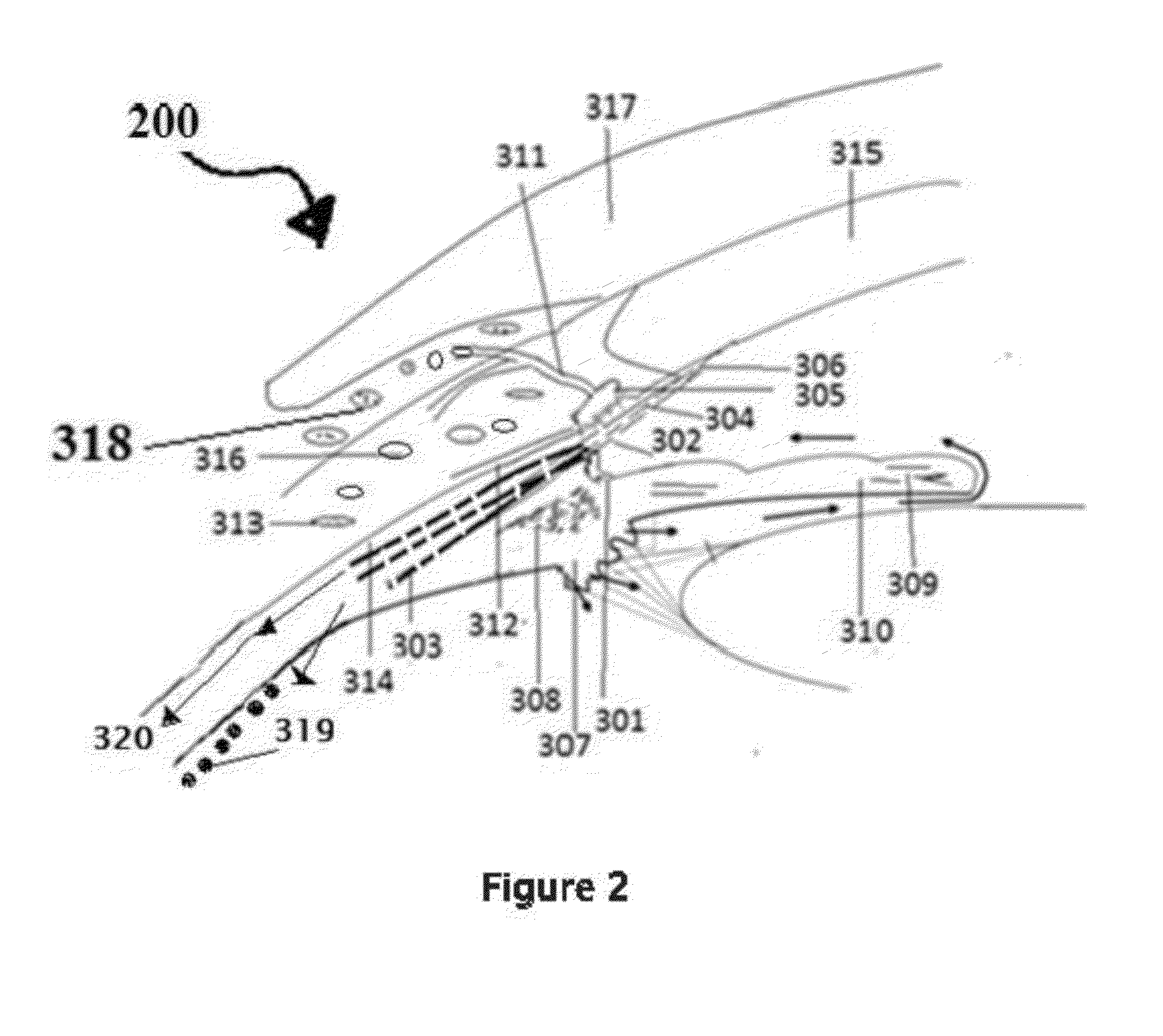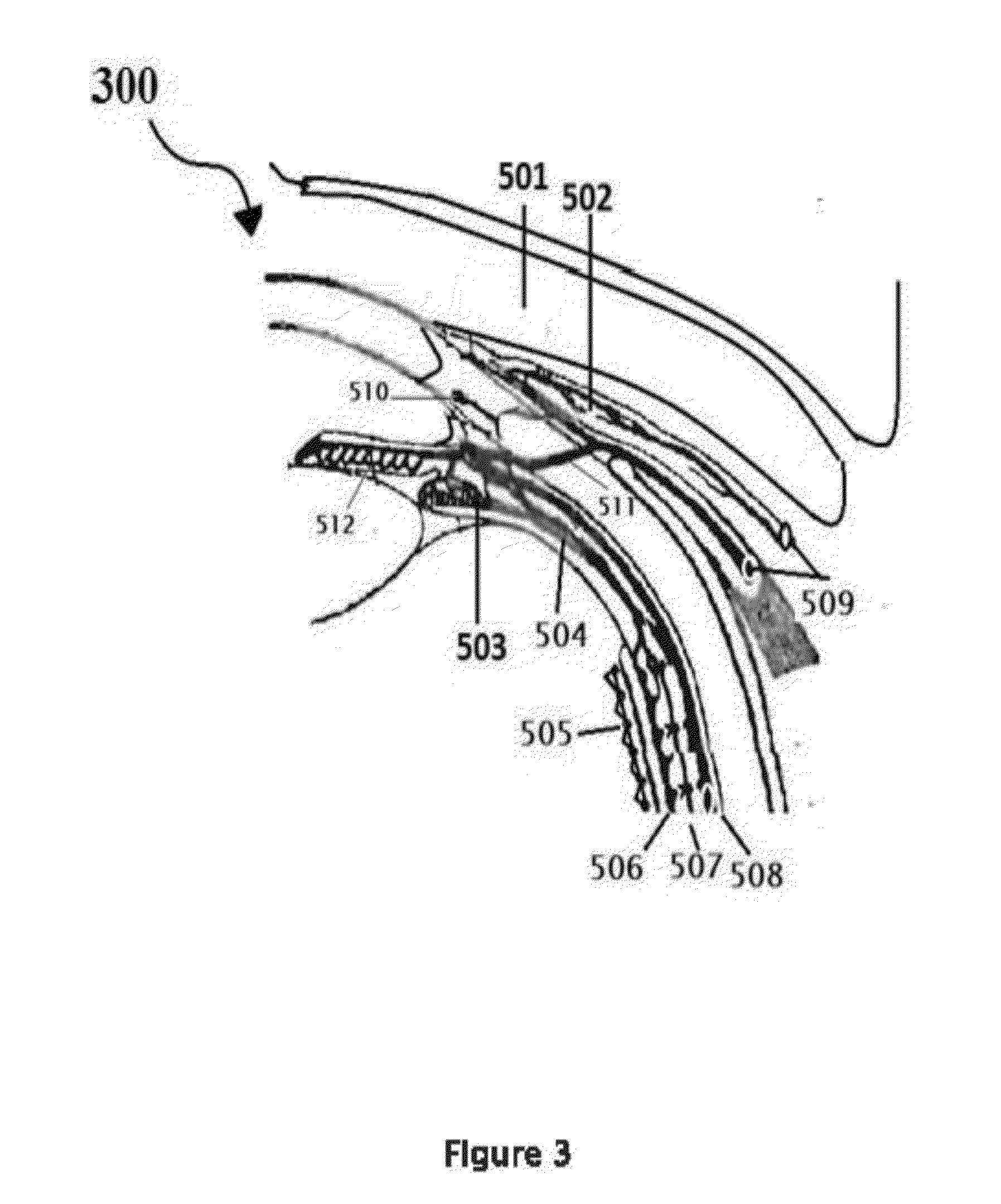Methods to enhance night vision and treatment of night blindness
a technology of night vision and enhancement, applied in the field of methods to enhance night vision and treatment of night blindness, can solve the problems of reducing the ability of people to see in dim light, more serious night vision problems, deadly auto accidents, etc., and achieves the effects of improving night vision, reducing the incidence of night blindness, and improving night vision
- Summary
- Abstract
- Description
- Claims
- Application Information
AI Technical Summary
Benefits of technology
Problems solved by technology
Method used
Image
Examples
example 1
[0123]In this ophthalmic preparation, take 5 ml of normal saline, which contains 0.05% povidone iodine premixed. To each ml add:
a) short acting insulin 40 IU,
b) Chlorin e6, 20 mg,
[0124]c) EDTA 30 mcg as preservative,
d) Prepare in a 5 or 10 ml sterile bottle with an eyedropper or plastic squeeze dropper. The dispenser is pre sterilized in boiling water or in a pressure sterilizer before mixing the above contents.
e) Mix them well in pharmaceutical shaker for 15 minutes under strict aseptic conditions and store in a sterile clean cool refrigerator until used.
The composition can be dispensed as liquid drops, ointment or as gel deposited under the eyelids. These therapeutic agents can also be delivered through the conjunctival sac by inserting a slow releasing non-reacting, self absorbing gel-patch containing insulin and chlorin e6 and other adjuvant therapeutic agents, inserted into the lower fornix of the conjunctival sac under the lower lids for prolonged slow release of therapeutic a...
example 2
[0125]Instead of premixing as described in the example 1, we have dispensed each therapeutic agents in separate dispensers with following instructions:
a) Eye drops contain chlorin e6 10 mg per / ml, prop 2-3 drops per eye. Each drop of ophthalmic drop will contain 0.50 mg of chlorin e6,
b) Wait for 5 minutes,
c) Then, instill 2-3 drops of insulin (one ml containing 40 units of insulin in 0.05% povidone iodine),
d) Then, rest lying down for 5-10 minutes and then resume activities.
e) It is important to use these ophthalmic preparations instilled to conjunctional sac around 5-6.00 PM, then before going to bed.
f) During daytime, use it as the sun goes down, or eight hourly in night blindness associated with oculopathies.
g) Daytime application avoided in young with normal vision and without eye diseases. Such person engaged in nighttime avocations; use these ophthalmic preparations in the evening and at bedtime and at 3.00 AM at work or driving to enhance the night vision.
If there are retinal...
example 3
[0126]a) Prepare eye drops as described in example 2,
b) Drop 2-3 drops per eye before going to bed, and at 6 PM.
c) Wait for 15 minutes,
d) Then, rest lying down for 10 minutes and then resume night work,
e) It is important to use this preparation before going to bed, and next day around 6:00 PM and eight hourly.
f) If the person is a night shift worker, patient instructed to carry it in pocket, and apply every eight hourly. For such patients, only chlorin e6 drops prepared and used with or without insulin.
Case report: This is a nighttime factory worker aged 55. He has gradually developed decreased night vision and night blindness. He has cataract changes in the eye, not advanced enough to perform cataract surgery. We prescribed the above regimen. Ask him to use every eight hourly after sundown, and eight hourly at daytime. His vision improved and was at ease driving at night times to work and at work.
PUM
| Property | Measurement | Unit |
|---|---|---|
| Fraction | aaaaa | aaaaa |
| Time | aaaaa | aaaaa |
| Mass | aaaaa | aaaaa |
Abstract
Description
Claims
Application Information
 Login to View More
Login to View More - R&D
- Intellectual Property
- Life Sciences
- Materials
- Tech Scout
- Unparalleled Data Quality
- Higher Quality Content
- 60% Fewer Hallucinations
Browse by: Latest US Patents, China's latest patents, Technical Efficacy Thesaurus, Application Domain, Technology Topic, Popular Technical Reports.
© 2025 PatSnap. All rights reserved.Legal|Privacy policy|Modern Slavery Act Transparency Statement|Sitemap|About US| Contact US: help@patsnap.com



